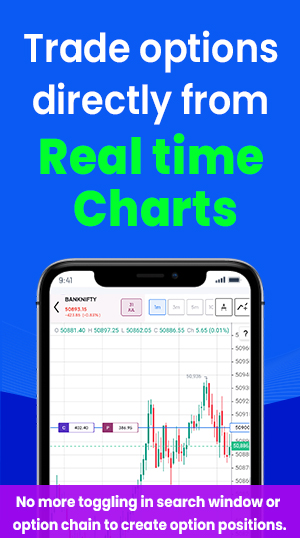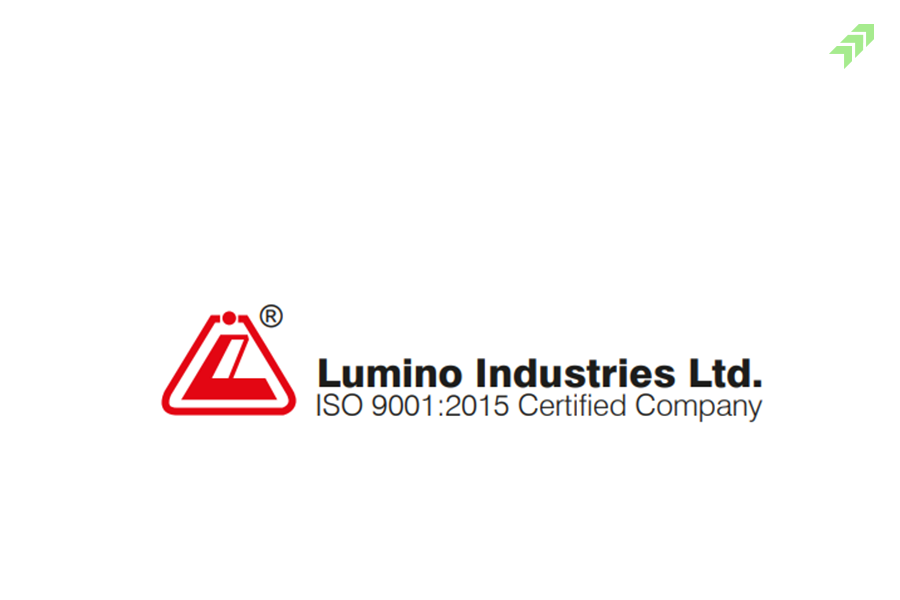Trading in the financial markets is becoming more precise with new technologies and innovative ways of analysis. However, the manual trading approach is still more popular and reliable, especially among traditional traders. But, a paradigm shift is also visible among all types and age groups of traders and investors who are now also opting for automated trading solutions for more efficient trading experience.
Algo trading and quantitative trading are one of the popular forms of trading you can use to trade in equities or other financial instruments. In our other articles, we have already discussed Algo trading, in this article, we are going discuss quantitative trading, and what are its advantages and disadvantages. This is also called quant trading let discuss about it and its trading strategies.
What is Quantitative Trading?
Also known as quant trading, this trading technique consists of the procedure of quantitative analysis, which means the trading decisions are taken on the basis of mathematical computation. In mathematical computation, you need to analyse market-related data like the movement of the market or underlying security, trading volume and other statistical data to make trade decisions.
However, the price and volume are the main inputs in quantitative trading techniques allowing the traders to analyse the price of the stock and its movement in various market conditions. Hedge fund houses and financial institutions usually use this trading technique as institutional traders because they deal in very large quantities of trades with high volumes in the stock market.
However, quantitative trading not only remains the plater of institutional traders but also becomes the dice of retail investors. If you are a retail investor and looking to trade using this technique you need to understand its advantages and disadvantages with the trading strategies used in quantitative trading.
Quantitative Trading Example
Suppose you want to trade or invest in stocks witnessing a high volume of trades, then you have to tune your quant model program to pick only the stocks trading with insignificant volume growth with the upward movement in the market. In quantitative trading, you can customize your trading strategy as per the market conditions or according to your preferences towards a particular stock.
When your quant model selects the stock as per the defined conditions that is based on the quantitative analysis. The strategy can be adjusted while considering the various parameters from fundamental analysis to technical parameters to analyse the stock trend and potential movement in stock. Under Quant trading, there are unlimited trading strategies and trading styles that can be used per the trader's ease.
Also Read: Difference Between Fundamental Analysis and Technical Analysis
Mechanisms of the Quantitative Trading:
Strategy Identification: The first step towards trading with quantitative trading is to start with identifying the strategy. Here the quant model can gather the data like identifying the market conditions or analysing other aspects and chart patterns, to decide which strategy would be suitable as per the market conditions. Choosing the right strategy helps to reduce the risk and enhance the chances of success of using such models.
Also Read: Types of Risks Associated with Investing in the Stock Market
Backtesting of Strategy: The next component of the trading with this model it you need to backtest your strategy ensuring the strategy will work for you. When you apply any strategy in the market, it is entirely based on the trend in the market with a hypothetical situation. Here you need to check to ensure the viability of applying the strategy to work in the line market. And to backtest your strategy you need the historical data with other inputs as per the various market conditions.
Also Read: How to Backtest a Trading Strategy in Algo: Backtesting Guidance
Execution of Strategy: The execution of strategy here is automated with the help of certain algorithms eliminating the manual intervention. However, the automation of strategy execution with the right approach not only ensures swiftness but also reduces transaction costs. The right execution of strategy in quantitative trading at the right time with effectiveness is very important to ensure its performance.
Risk Management: Trading with the right risk management is the next approach of quantitative trading helping the traders to deal with different types of risk involved while trading in the market. A proper risk management strategy will protect your strategy from various types of risks like market risks, transaction risks, brokerage risks, technological risks and risks associated with intermediaries. Here quant models can help you in dealing with such risks with better efficiency and effectiveness in various situations.
Advantages of Quantitative Trading
Every trading technique has its own pros and cons, quantitative trading also has advantages as well as disadvantages. Understanding both aspects is necessary to maximize the earnings from trading in various market conditions, let’s find out what are its advantages and disadvantages.
Interpretation of Massive Amount of Data
The quant model is capable of interpreting and analysing a huge amount of data without taking too much time or lagging while dealing with such a massive amount of data. While analysing such data you can consider a few limited factors while a quant trader can analyse the complex level of unlimited data and perform the mathematical calculations. Dealing with huge data could be challenging for individual traders, but using the quant model helps to resolve the problems of analysing any amount of data.
Highly Efficient Trading Experience
The quantitative trading technique works on the computer system with certain algorithms that can operate at very high speed to perform trading activities. This high-speed trading system through quantitative techniques helps to perform complex trading strategies at very high efficiency. This helps the traders reduce the trade timing and maximize the frequency to generate high volume.
Also Read: Six Advantages of Algorithmic Trading with Algo Trading Tips
Trade with More Accuracy
The computer programs perform the entire trading procedure using the algorithms, as there is no involvement of humans, which reduces the chances of errors. The computer systems are not influenced by any emotions or face any tiredness, which makes all the transactions free from any error. Trading with this technique helps to improve the overall profitability trading with quantitative trading.
Giving More Calculative Results
Quantitative trading works on the basis of historical datasets and mathematical calculations to analyse the price movement and chart patterns of the market or underlying security. Using the quantitative trading approach, you can get more calculative results that can help you to estimate the profitability of their trade positions and improve the overall returns from the trading.
More Defined Trade Decisions
Another advantage of quantitative trading is you will be able to make more precise and well-informed decisions using the useful amount of datasets. With more quantity of data, the analysis will help you to understand the market behaviour or know its current trending a way that is more precise. This kind of trading approach helps to make well-informed and precise trade decisions for better outcomes.
Emotion-free Trading Strategies
In quantitative trading, the entire trading mechanism works on the basis of taking mathematical calculations, there are no emotions involved as humans do. This emotion-free trading also makes the system make trade decisions without any fear, greed or excitement that are very common the traders. This kind of emotion-free trading decision can give you results only considering the quantitative factors.
Disadvantages of Quantitative Trading
Technical Know-how to Operate
One of the biggest disadvantages of quantitative trading in the stock market is using such complex models. To use or operate such complex quantitative trading models you need an extensive amount of knowledge and experience, especially in mathematical calculations, coding and expertise to deal with extreme market situations. If you were not familiar with such quant models, it would be not possible for you to utilize the quantitative trading techniques or use them in your trading strategies.
Also Read: Top 10 Different Types of Trading Strategies in Stock Market
Not Suitable for Volatile Markets
Sometimes market trade with volatility making the price movement unstable with unpredictable movement on any side, and quant trading models are not able to adapt the volatile market conditions. The lack of adaptability towards such unpredictable market movement can make your quant model not work properly. Failing to adjust in various market conditions can cause you to incur losses.
Unavailability of Quality of Data
To train such a quant model a huge amount of high-quality datasets is required, and this data should be free from any type of errors and discrepancies. Gathering huge amounts of such high-quality datasets is not only challenging but also makes the quant model more expensive due to its high training cost. The inaccuracy of data can give you inaccurate results and can alter your trade decisions.
Risk of Trading with Outdated Models
To develop the quantitative trading models huge amount of historical market data is used, and the outputs are based on these data. However, ever changing economic conditions and new developments and growth in various sectors including technological improvements the dynamics of the market alsochange. Here the risk of using the outdated quant models could be not reliable with the latest market conditions. Just models need to be revamped with or upgraded timely to ensure the reliability of using such models.
Unexpected Technical Barriers
In the world of innovations and technology, another level of challenge making such models become the victim of technical barriers. These models are developed with sophisticated algorithms to perform complex mathematical calculations and any kind of malfunction or technical glitches can badly disturb the performance or alter the outputs of such quant models in various market conditions.
Also Read: How to Predict Stock Market Direction: Important Parameters
Summing-up
Quantitative trading techniques are like trading strategies in which entire decisions are taken on the basis of mathematical calculations and statistical data. The quant model is used to analyse the market data like price, volume of trades and numerical values to make the trade decisions. There are various components like identification, backtesting and execution of strategy involved in quant trading. However, there are certain advantages and disadvantages of using the quantitative trading techniques.
The huge data interpretations, high efficiency, and accuracy with more calculative results are the advantages of quantitative trading. While technical know-how, market volatility, technical glitches and outdated data used in the quant models and are the drawbacks of quantitative trading. Hence, to use this trading technique you need to understand these challenges and apply robust tools and methodologies for better outputs and improve your chances of success while trading in unexpected market conditions.

















